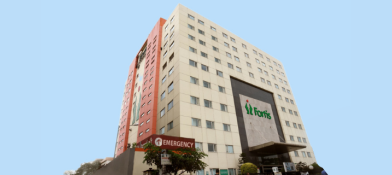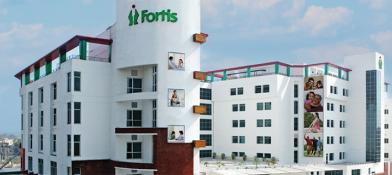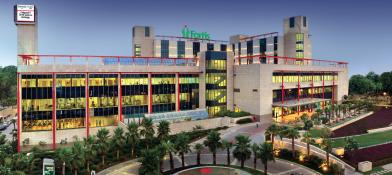General Surgery at Fortis Hospitals is committed to providing comprehensive surgical care using the latest advancements in medical technology. Our team of experienced and highly skilled surgeons specialize in a wide range of procedures, from routine appendectomies and hernia repairs to complex gastrointestinal surgeries and advanced laparoscopic techniques. With a patient-centric approach, we prioritize safety, precision, and quick recovery, ensuring personalized treatment plans tailored to each individual's needs.
Our state-of-the-art facilities are equipped with cutting-edge surgical equipment, enabling minimally invasive procedures that reduce pain, minimize scarring, and promote faster healing. At Fortis, we strive to deliver excellence in surgical care, ensuring the highest standards of quality and patient satisfaction.
General Surgery conditions in which Robotic-assisted Surgery is indicated
- Cholelithiasis
- Hernia repair (inguinal, ventral, and hiatal)
- Gastroesophageal reflux disease (GERD)
- Colorectal surgery (colectomy, rectal surgery)
- Bariatric surgery (gastric bypass, sleeve gastrectomy)
- Pancreatic surgery
- Liver resection
General Surgery procedures performed in Robotic-Assisted Surgery
- Cholecystectomy
- Inguinal and Ventral Hernia Repair
- Fundoplication
- Colectomy
- Rectal Surgery
- Gastric Bypass and Sleeve Gastrectomy
- Esophagectomy
- Pancreatectomy
- Hepatectomy
- Adrenalectomy
- SplenectomyBenefits of Robotic-Assisted Surgery in General Oncology
- Enhanced Precision
- Minimally Invasive Approach
- Faster Recovery
- Reduced Complications
- Improved Outcomes
Our Team of Experts
-
 Dr. Ajay Kumar KriplaniPRINCIPAL DIRECTOR & HOD LAP GI, GI ONCO, BARIATRIC & MIS SURGERY
Dr. Ajay Kumar KriplaniPRINCIPAL DIRECTOR & HOD LAP GI, GI ONCO, BARIATRIC & MIS SURGERY -
 Dr. Iqbal SinghSENIOR CONSULTANT GENERAL SURGERY
Dr. Iqbal SinghSENIOR CONSULTANT GENERAL SURGERY -
 Dr. Rudra Prasad DoleyDIRECTOR GENERAL SURGERY
Dr. Rudra Prasad DoleyDIRECTOR GENERAL SURGERY -
 Dr. Sandip RayCONSULTANT GENERAL SURGERY
Dr. Sandip RayCONSULTANT GENERAL SURGERY -
 Dr. UDIPTA RAYDIRECTOR GI, MINIMAL ACCESS & BARIATRIC SURGERY
Dr. UDIPTA RAYDIRECTOR GI, MINIMAL ACCESS & BARIATRIC SURGERY
FAQs
What is the Robotic Surgical System?
It is a system consisting of three parts:
Surgeon Console is the control centre where your surgeon sits to perform the operation.
Patient Cart holds the camera and surgical instruments your surge on controls from the console.
Vision Cart manages the communication between all the system components and provides a screen for the care team to view the operation.










